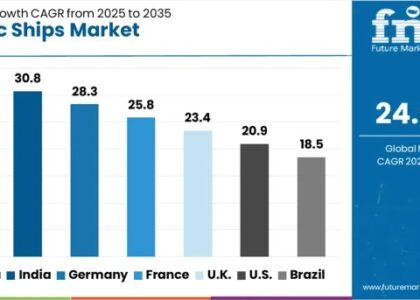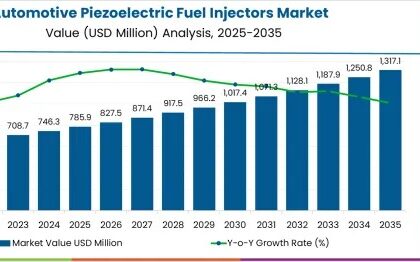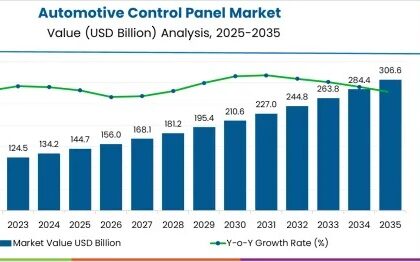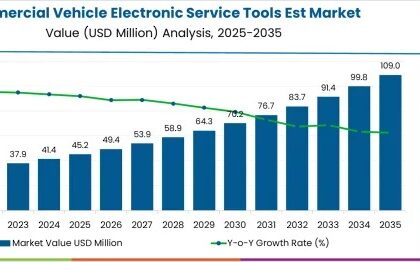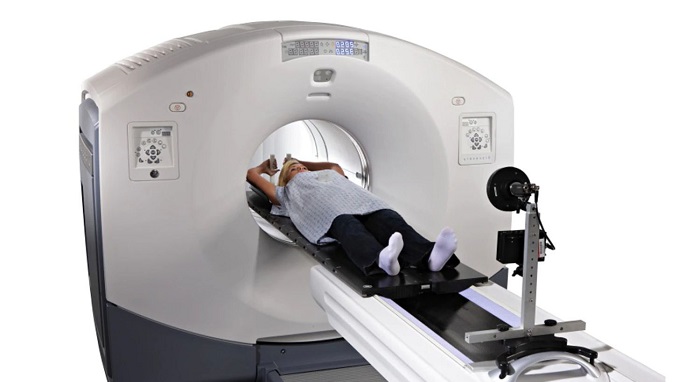
The global positron emission tomography (pet) scanners industry is undergoing a significant transformation, poised for exponential growth over the coming decade. Recent estimations indicate the market’s value at an impressive US$ 1.3 billion in 2023, and forecasts predict a robust climb to an estimated US$ 2.1 billion by 2033. This exceptional trajectory indicates a Compound Annual Growth Rate (CAGR) of 5.3% during the forecast period.
The surge in demand for PET scanners is underpinned by the evolution of diagnostic technologies and an increased focus on precision medicine. With its ability to provide detailed, real-time imaging of metabolic processes within the body, PET scanning has become a cornerstone in diagnosing diseases at their earliest stages, influencing effective treatment decisions.
Receive Your Sample Report Unveiling The Latest Market Statistics! https://www.futuremarketinsights.com/reports/sample/rep-gb-1333
The rise in chronic diseases, coupled with the escalating geriatric population globally, has been a pivotal factor propelling the demand for PET scanners. Additionally, continuous technological advancements enhancing the accuracy, resolution, and efficiency of PET imaging procedures further drive market expansion.
By continually investing in research and development initiatives, key market players are consistently innovating to introduce cutting-edge PET scanner models, catering to diverse healthcare needs. Collaborations between academia, research institutions, and industry stakeholders foster an environment ripe for breakthroughs in imaging technology, promising a brighter, healthier future for patients worldwide.
As the market continues its upward trajectory, industry leaders anticipate an evolution in the PET scanners landscape, offering healthcare professionals unparalleled diagnostic capabilities and patients more effective treatment options.
Key Takeaways:
- The process incorporates the visualization of biochemical changes in the body, including the strong metabolism of the heart muscle. These efficient scanners employ a type of nuclear medicine process in order to accurately measure the metabolic activity of the body tissues and cells. It is a combination of nuclear medicine and biochemical analysis. They are mostly used in patients with heart or brain conditions, and cancer.
- The surging adoption of PET and X-ray transmission computed tomography (CT) scans is expected to propel growth in the market over the upcoming years. This innovative technology is predicted to reduce acquisition time, and provides precise attenuation correction and fusion imaging, resulting in high diagnostic sensitivity and specificity.
- Furthermore, the combination of PET and CT helps in improving the staging of disease by defining prognostic and treatment monitoring capabilities of the functional and metabolic information given by conventional nuclear imaging techniques.
- Most PET scanning products are used to perform fluorodeoxyglucose (FDG) as it has the capability to capture tissue glucose metabolism and increase its parameters. Although, fluorodeoxyglucose consists of some shortcomings such as low specificity. Additionally, several potential radiotracers are under investigation to address the unmet clinical needs of diagnosis of diseases.
- In order to tackle such diseases, various manufacturers are launching new products that come with higher sensitivity concerning metabolic activity to achieve detailed scans. Players are also investing in mergers and acquisitions to improve their product portfolios.
- The market is expected to comprise mandatory equipment registered in several countries, regulatory requirements for development, and reimbursement changes. The market is highly influenced by the advances in minimally invasive surgical procedures and the establishment of new patented products.
- Over the recent years, the market observed a surge in the BPS values owed to the potential benefits of digital PET scanners over conventional analog scanners attributed to their improved image quality, thus promoting greater adoption. In addition to that, the market experienced change within the BPS values owing to the reduction in the number of elective surgeries as well as the emergence of telehealth during the advent of the COVID-19 pandemic.
Reach Out To Our Analyst And Get All Your Queries Answered! https://www.futuremarketinsights.com/ask-question/rep-gb-1333
Competitive Landscape:
Key market players are concentrating on a novel and innovative approaches for the development of positron emissions tomography scanners driven by emerging cases of infectious diseases and the lack of advanced methods for efficient detection. An expansion of the production facility along with new product launches and approvals are projected to further strengthen the growth of the market.
More Insights into the Positron Emission Tomography (PET) Scanners Industry
The U.S. is anticipated to dominate the North American market as it accounted for around 94.4% of the total market share in 2020. Due to the rising prevalence of cancer in the country, an underpinning need for advanced PET scanners, thereby creating sales prospects in the market.
Some of the prominent players in the market are:
- G.E. Healthcare
- Toshiba Corporation
- Koninklijke Philips N.V.
- Siemens Healthineers
- Hitachi Medical Corporation
- Positron Corporation
- Mediso Ltd.
- Yangzhou Kindsway Biotech Co., Ltd
Customization Unleashed: Learn How to Stand Out in a Competitive Landscape! https://www.futuremarketinsights.com/customization-available/rep-gb-1333
Positron Emission Tomography (PET) Scanners Industry by Category
By Product Type:
- Full-ring PET Scanner
- Partial-ring PET Scanner
By Application:
- Oncology
- Cardiology
- Neurology
- Others
By Detector Type:
- Bismuth Germanium Oxide
- Lutetium Oxyorthosilicate
- Gadolinium Oxyorthosilicate
- Lutetium Fine Silicate
- Lutetium Yttrium Orthosilicate
By End User:
- Hospitals
- Diagnostic Centers
- PET Centers
- Research Institute
For In-Depth Competitive Analysis – Purchase This Report Now At A Discounted Price! https://www.futuremarketinsights.com/checkout/1333
Author By:
Sabyasachi Ghosh (Associate Vice President at Future Market Insights, Inc.) holds over 12 years of experience in the Healthcare, Medical Devices, and Pharmaceutical industries. His curious and analytical nature helped him shape his career as a researcher.
Identifying key challenges faced by clients and devising robust, hypothesis-based solutions to empower them with strategic decision-making capabilities come naturally to him. His primary expertise lies in areas such as Market Entry and Expansion Strategy, Feasibility Studies, Competitive Intelligence, and Strategic Transformation.
Holding a degree in Microbiology, Sabyasachi has authored numerous publications and has been cited in journals, including The Journal of mHealth, ITN Online, and Spinal Surgery News.
About Future Market Insights (FMI)
Future Market Insights, Inc. (ESOMAR certified, recipient of the Stevie Award, and a member of the Greater New York Chamber of Commerce) offers profound insights into the driving factors that are boosting demand in the market. FMI stands as the leading global provider of market intelligence, advisory services, consulting, and events for the Packaging, Food and Beverage, Consumer Technology, Healthcare, Industrial, and Chemicals markets. With a vast team of over 5000 analysts worldwide, FMI provides global, regional, and local expertise on diverse domains and industry trends across more than 110 countries.
Contact Us:
Future Market Insights Inc.
Christiana Corporate, 200 Continental Drive,
Suite 401, Newark, Delaware – 19713, USA
T: +1-845-579-5705
For Sales Enquiries: sales@futuremarketinsights.com
Website: https://www.futuremarketinsights.com
LinkedIn| Twitter| Blogs | YouTube


